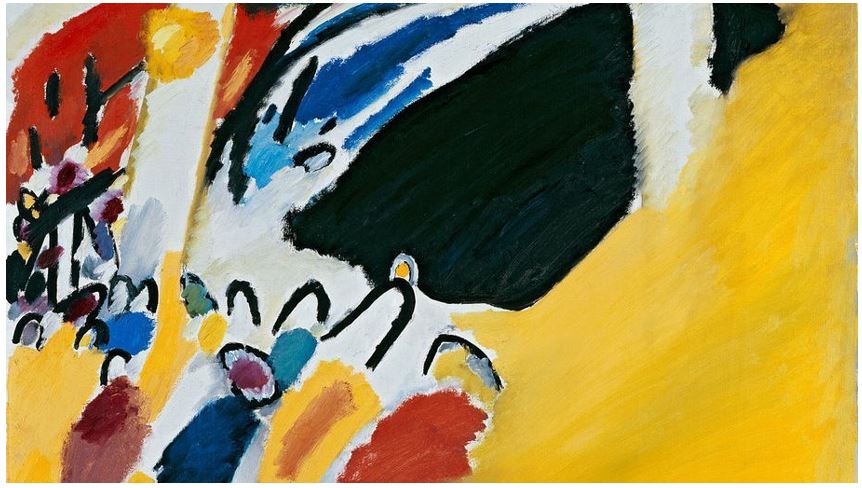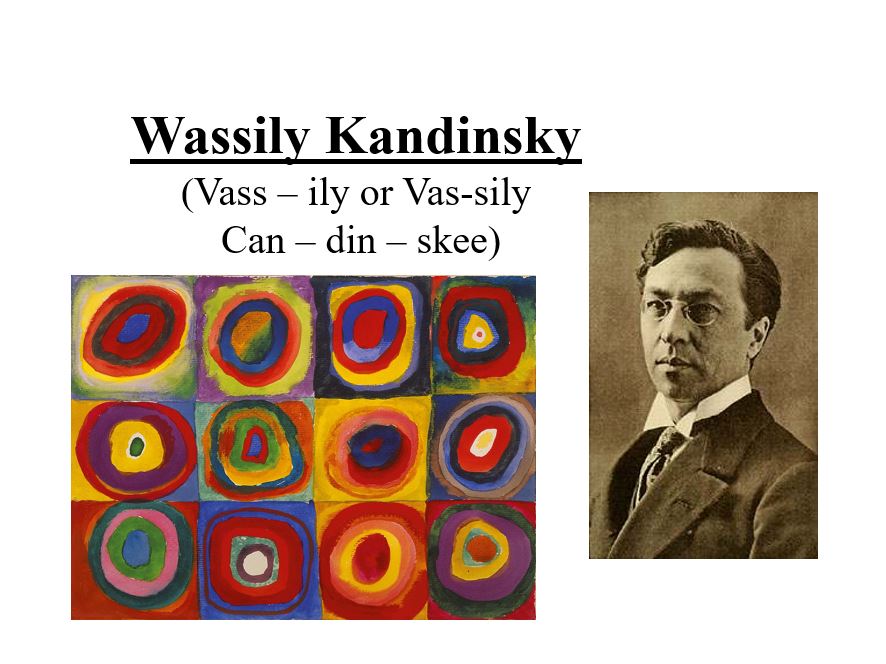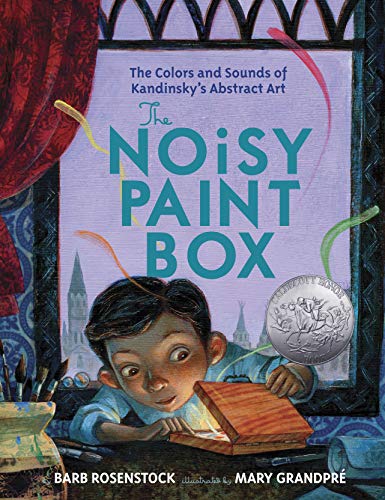In this Wassily Kandinsky lesson, students of all ages will learn about this remarkable art master, and create their own art by listening to music.

Grade Level
Kindergarten, 1st, 2nd, 3rd, and 4th, 5th, 6th, 7th, 8th Grade
Objective
In this Wassily Kandinsky lesson, students of all ages will learn about this remarkable art master, and create their own art by listening to music.
While teaching this lesson, you will cover many curricular topics including music theory, lines, color theory, and geometry. I normally teaching my lessons in person. Therefore, most of my lessons usually include a final frame-able product. However, in this lesson, students create art purely by listening to music. As a result, I did not focus on a final product. Instead I focused more on the the experience of making the art.
Time
1 – 60 min lesson or possibly two hours depending on how you choose to approach it
Materials
- Pencils
- Copy paper
- Black Sharpie Marker
- Any materials may be used for this lesson to color it. Paints, crayons, markers, colored pencils, oil pastels, or chalk.
Inspiration/Artist
Wassily Kandinsky
Instruction with Questions
Step One
Read the book, “The Noisy Paint Box: The Colors and Sounds of Kandinsky’s Abstract Art” by Barb Rosenstock.
Review what students know about Line. Define different types of lines with the students. Ask them to share examples.
Step 2
Discuss “Line”:
A line is an identifiable path created by a point moving in space. It is one-dimensional and can vary in width, direction, and length. Lines often define the edges of a form. They can be horizontal, vertical, or diagonal, straight or curved, thick or thin.
Step 3
Everything else you need for this lesson is in the power point attached. Most importantly, it includes
- A brief overview of Kandinsky’s life
- The development of his artwork
- Resources for students to make their own Kandinsky-like artwork
- Links to Youtube for easy listening of various musical instruments
- Link to Google Chrome for a Kandinsky “lab”
If you wanted to use this with arts integration, for instance, you could:
- Assign creative writing for language arts.
- Have students draw or identify geometric figures for math.

Common Core Standards for Wassily Kandinsky
K-2 – Language Arts
Children’s adventure stories, folktales, legends, fables, fantasy, realistic fiction, and myth. Includes staged dialogue and brief familiar scenes. Also included are nursery rhymes and the sub-genres of the narrative poem, limerick, and free verse poem Includes biographies and autobiographies
Kindergarten – Math
Geometry
Identify and describe shapes (squares, circles, triangles, rectangles,
hexagons, cubes, cones, cylinders, and spheres).
1. Describe objects in the environment using names of shapes, and describe
the relative positions of these objects using terms such as above, below,
beside, in front of, behind, and next to.
2. Correctly name shapes regardless of their orientations or overall size.
1st Grade – Math
Geometry
Reason with shapes and their attributes. (1-2)
2nd Grade – Math
Geometry
2.G Reason with shapes and their attributes.
- Recognize and draw shapes having specified attributes, such as a given number of angles or a given number of equal faces.
Identify triangles, quadrilaterals, pentagons, hexagons, and cubes.
3rd Grade – Math
Geometry
Reason with shapes and their attributes. (1-2)
4th Grade – Math
Geometry
Draw and identify lines and angles, and classify shapes by
properties of their lines and angles. (1-3)
5th Grade-8th Grade – Math
Geometry varies.


Leave a Reply